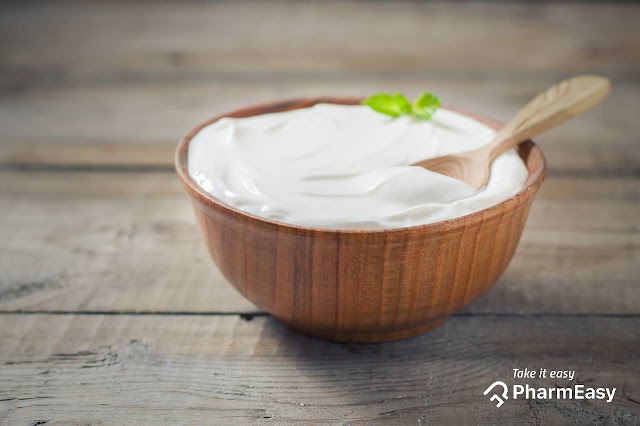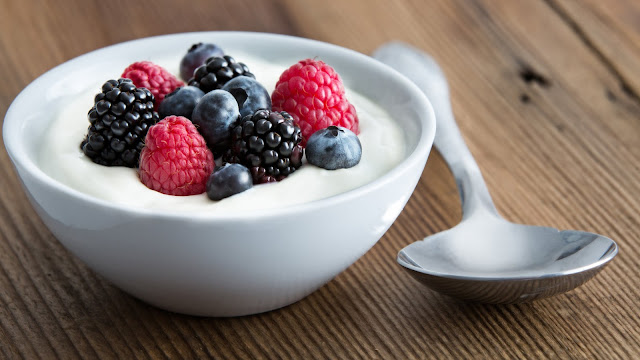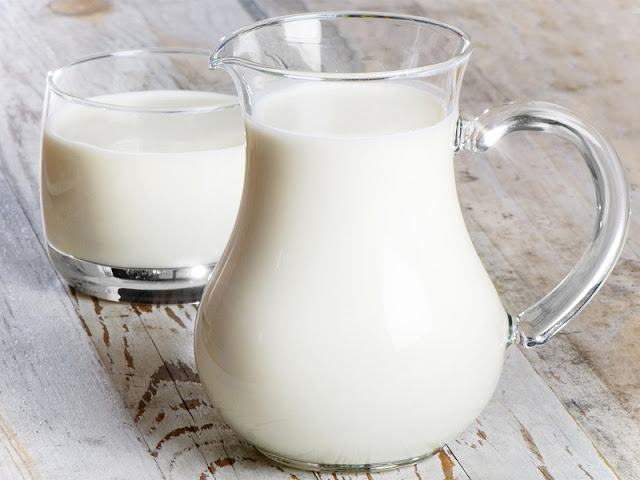Which Kind of Yogurt Is Better for Weight
Loss: Greek or Plain?

Yogurt has long
been praised for being a nutrient-dense food with several health advantages.
Greek yogurt and plain yogurt are two commonly chosen options when it comes to
losing weight. Each has special qualities and possible benefits, so it's
important to know the distinctions to decide which one could be better
for losing weight.
Simple Yogurt
Regular yogurt, sometimes known as plain yogurt, is
created by fermenting milk using bacterial cultures. Compared to Greek yogurt,
it has a thinner consistency as it keeps its original liquid whey. The
following are some important details about the appropriateness of plain yogurt
for weight loss:
Lower in Calories:
Because plain
yogurt has a higher water content than Greek yogurt, it usually has fewer
calories. For those who want to reduce their calorie consumption while still
reaping the advantages of yogurt, this may be helpful.
Rich in Probiotics:
Probiotics help
maintain a healthy gut microbiota, and both plain and Greek yogurts are great
sources of them. In addition to helping with digestion, a healthy gut may help
with weight management.
Greek dairy

Contrarily, Greek yogurt has
a creamier, thicker texture and is created by straining normal yogurt to
eliminate surplus liquid. It may be recommended for weight loss for the
following reasons:
Greater Protein Content:
Greek yogurt is said to have more protein than plain yogurt. Protein is widely
recognized for its capacity to increase satiety, which can aid in appetite
regulation and lower total caloric intake.
Lower Carbohydrate Content:
Greek yogurt's straining procedure also lowers the amount of carbohydrates it
contains in comparison to plain yogurt. This may prove beneficial for those on
low-carb or ketogenic diets.
In conclusion, either plain yogurt or Greek yogurt can be a part of a weight reduction strategy; the decision between the two is based on personal taste and nutritional objectives. Greek yogurt is a protein powerhouse that may help you feel fuller for longer, while plain yogurt is a lighter alternative with fewer calories. Plain yogurt can be a better option for people who are concerned about cutting calories, while Greek yogurt might be a better fit for those who want to consume more protein and feel more satisfied after eating.
Yogurt's ability to aid in
weight loss ultimately hinges on how well-balanced a diet and way of life it is
combined with. To optimize the health advantages of yogurt, it's crucial to
select plain or Greek yogurt free of artificial ingredients and added sugars.
Trying out both varieties and preparing them in different ways for your diet
might be a tasty and nourishing method to assist your weight reduction efforts.
Benefits of Skimmed Milk for
Weight Loss

1. A Lower Calorie Consumption
Because the fat is removed during the manufacturing process, skimmed milk has fewer calories than whole milk. Selecting skim milk can help you achieve a calorie deficit, which is a key component of weight reduction.
2. Rich in Protein
The protein included in skim
milk is retained, and protein is necessary for both muscle growth and repair.
Protein can increase satiety, making people feel satisfied for
longer and perhaps lowering caloric consumption in general.
3. Vitamin D and calcium
The essential nutrients for
strong bones, calcium, and vitamin D, are still present in skim milk. It still
contains these vital nutrients while having less fat, which helps with general
well-being when trying to lose weight
4. Reduced Saturated Fat
Skim milk is lower in
saturated fat than full milk. Since consuming less saturated fat is generally
advised for heart health, skim milk is a heart-healthy choice.
Side Effects and Considerations
1. Absorption of Nutrients
For best absorption, many
fat-soluble vitamins—like A and D—need dietary fat. The lack of fat in skim
milk might affect how well certain vitamins are absorbed. This worry can be
lessened by eating meals high in healthy fats together with skim milk.
2. Levels of Satisfaction
Despite having a high
protein content, skim milk may not be as satiating for longer since it lacks
fat. People may discover that alternative sources of good fats, such as whole
milk, help them feel fuller for longer periods.
3. Additives and Processing
Further processing can be
applied to skim milk to eliminate fat, and certain commercial kinds
may also contain fortifications or additions. To maintain the nutritious value
of the milk, less processed choices must be used.
4. Texture and Flavor
Skim milk may taste and feel
different once the fat is removed, making it less palatable to certain people.
Overcoming these taste problems could be aided by mixing it with cereal or
coffee.
Because skim milk has fewer
calories and fat, it can be a useful addition to a diet aimed at weight
reduction, but it's important to take into account dietary requirements and
personal preferences. The combination of skimmed milk with a diverse,
well-balanced diet rich in nutrient-dense foods guarantees long-term weightloss and improves general health. It is wise to speak with a healthcare
provider or nutritionist before making any dietary adjustments in order to
customize advice to each person's requirements and objectives.





0 Comments